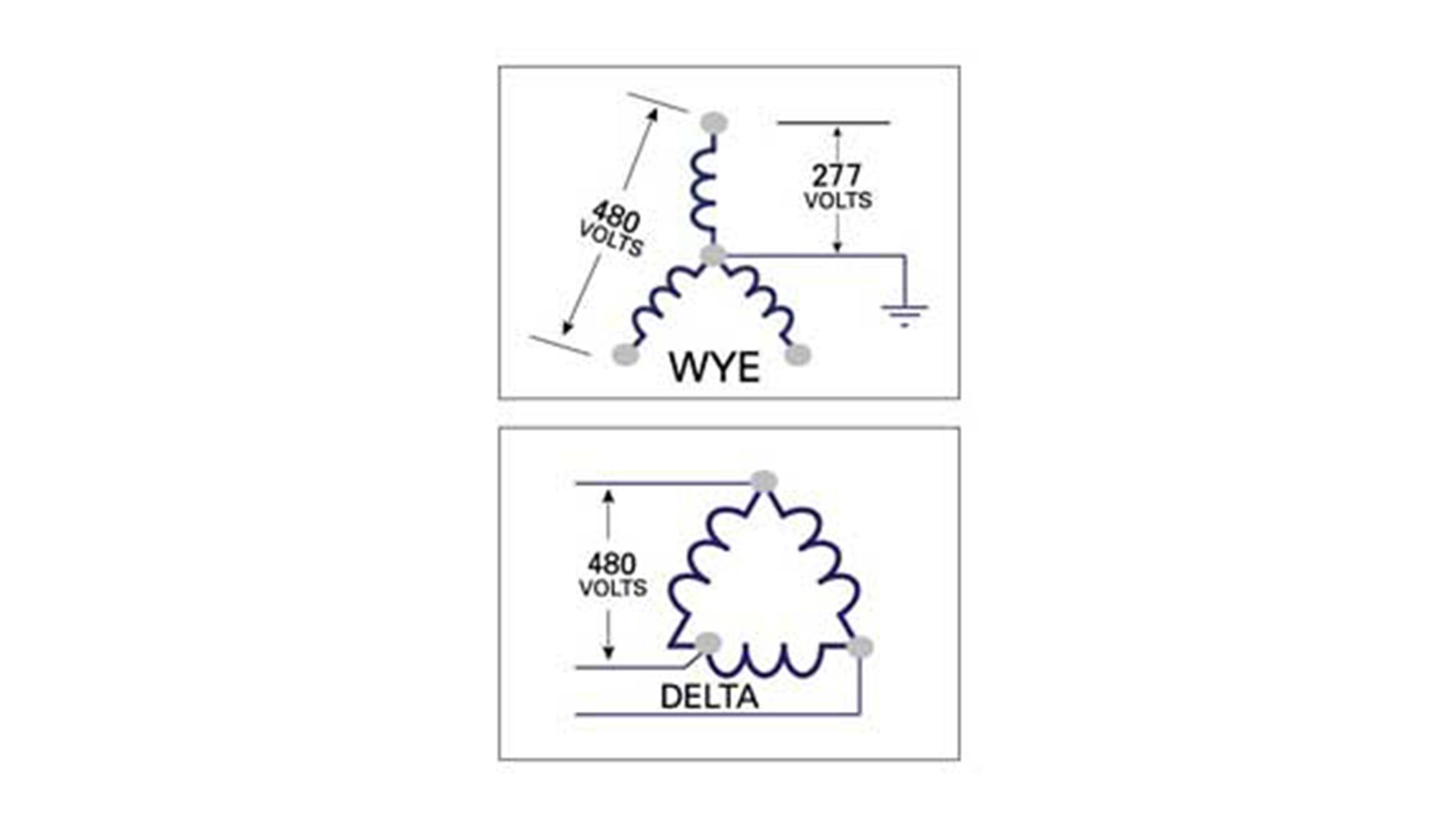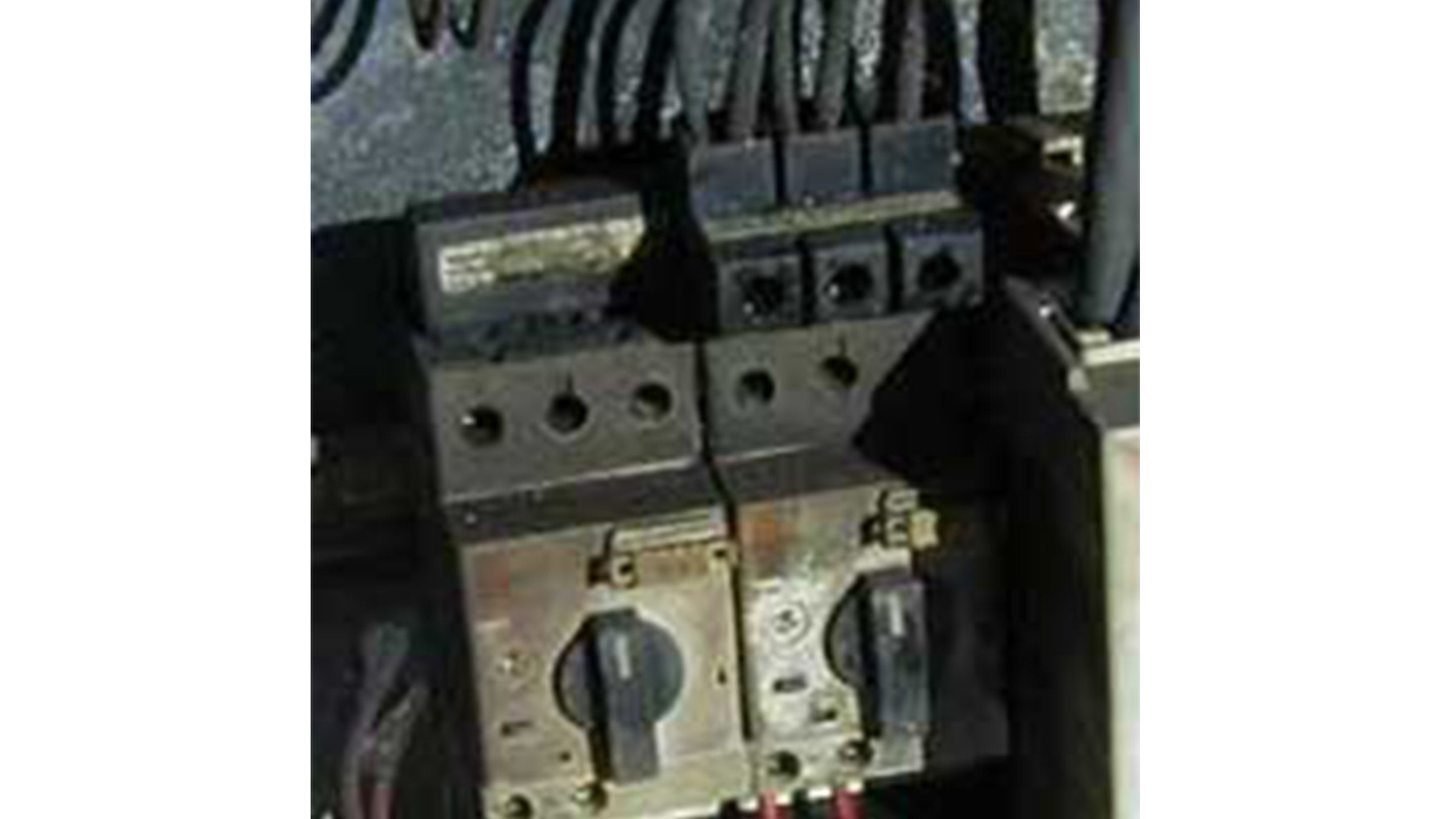Wye Power Vs. Delta Power Systems
Tech Support personnel often receive questions regarding KTA7 manual motor controllers, or KTU7 and L9 circuit breakers, and what is the meaning of a delta connected system versus wye connected power systems. People assume that because the neutral (3-phase 4-wire) is not pulled to the starter or custom control panel (3-phase 3-wire) that this implies a delta system. Some people assume that since most motors are delta connected internally that this has some bearing on the system voltage.
The fact is neither of these assumptions have a bearing on the 480Y/277 VAC or 600Y/347 VAC rating of the KTA7, KTU7 or L9.
The question is "What is the phase to Ground voltage?"
- The 480Y/277 VAC or 600Y/347 VAC rating of the KTA7, KTU7 and L9 does not depend on if the neutral is pulled to the MCC or for heater resistive load.
- It does not matter if the motor is connected delta.
- It depends on the incoming voltage source. The incoming source must be wye not delta connected. Neutrals are tied to ground as you enter the building and the measurements to ground remain unchanged.

The primary issue is that these devices are slash rated [see footnote (2)] and will NOT withstand a Phase to Ground fault greater than 380 VAC (277VAC for L9).
You might ask what will happen if you connect a KTA7 to a 480 delta system. Answer – nothing until you have a short-circuit fault and then the current carrying parts will most likely move (which is the definition of a UL/ CSA failure). What does that look like? It would look like black soot, parts blown everywhere and adjacent components damaged. Boom!
It looks like the short-circuit protection didn't do the job and not surprising since these devices are not designed for phase to ground faults greater than 380 VAC (277VAC for L9). This is in fact the major difference in a straight rated 600 VAC class molded case circuit breaker which is bigger, more rugged, more expensive and most of all designed for to withstand a 600 VAC ground fault.
Article 240.85 Of The National Electrical Code Defines The Use Of A Straight Rated Circuit Breaker.
(1) "A circuit breaker with a straight voltage rating, such as 240V or 480V, shall be permitted to be applied in a circuit in which the nominal voltage between any two conductors does not exceed the circuit breaker's voltage rating."
(2) "A circuit breaker with a slash rating, such as 120/240V or 480Y/277V, shall be permitted to be applied in a solidly grounded circuit where the nominal voltage of any conductor to ground does not exceed the lower of the two values of the circuit breaker's voltage rating and the nominal voltage between any two conductors does not exceed the higher value of the circuit breaker's voltage rating."
For additional information please contact your nearest authorized distributor, sales representative, or call our customer service or technical support lines.
